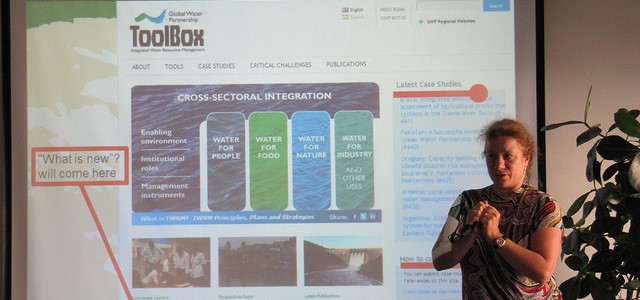National IWRM Plans (C4.01) identify actions and a set of management instruments that are embedded in a wider framework of policies, legislation, financing structures, and capable institutions with clearly defined roles. These actions and management instruments effectively regulate the use, conservation, and protection of the water resources, and balance requirements for broad economic development with the need to sustain ecosystems.
It is important to recognise the dynamic nature of the planning process because a significant value of the concept lies in its flexibility. The implementation of the plans should be continuously monitored and the plans themselves adjusted to take into account recent development trends. For that to happen, plans should be created in planning cycles, each accounting for the experiences gathered in planning and implementing previous plans. In order to facilitate implementation and the monitoring of implementation, plans should have a fixed timeline that sets out specific milestones that can be measured and assessed.
Often, the geographic limit of water management plans is the river or lake basin (C4.02), but it is important to recognise cross-basin effects as well as the impact on other environmental media, and the relationship between rivers and coastal waters (C4.04), and ground and surface water (C4.03). But IWRM plans can also be used to address the specific conditions and needs in a particular spatial set up, such as urban areas (C4.05), or in a particular kind of situation, such as natural disasters (C4.06).
The responsibility for the planning process itself inevitably rests with the authorities that have legal or delegated mandates, be they national agencies, regional authorities, or river basin organisations. However, for implementation to be successful, it is important that the responsible authorities design a planning process that allows for involvement and contribution from all affected parties, including the private sector, community groups, and relevant stakeholders including disadvantaged groups (see C3.02; C3.03).
The planning process must factor in not only development options within the water sector itself, but also scenarios for development, and relations between other sectors that may have an impact on the water resources (e.g. water demand or water quality). For this reason, thorough assessments not just of water resources, but also of social, economic and environmental aspects, are needed in order to develop plans that successfully promote water security (see Tools C1 and C2). Likewise, the consequences of water management decisions on other economic sectors (e.g. agriculture, navigation, tourism, industry or health) should be an integral part of the analyses made during the planning process. It is important that the planning process includes analysis of risks (climatic variations, as well as economic, political, and other risks) and addresses the necessary and adequate measures to reduce or manage risks (see C2.01; C2.05). Plans should also take account of potential hazards and the vulnerability of people and ecosystems to extreme events (see C2.02; C2.04).
In order to synthesize this diverse information and to compare and evaluate alternatives, a planning process benefits from using modelling and decision-making tools such as GIS (C3.01) and/or Decision Support Systems (C3.04).

